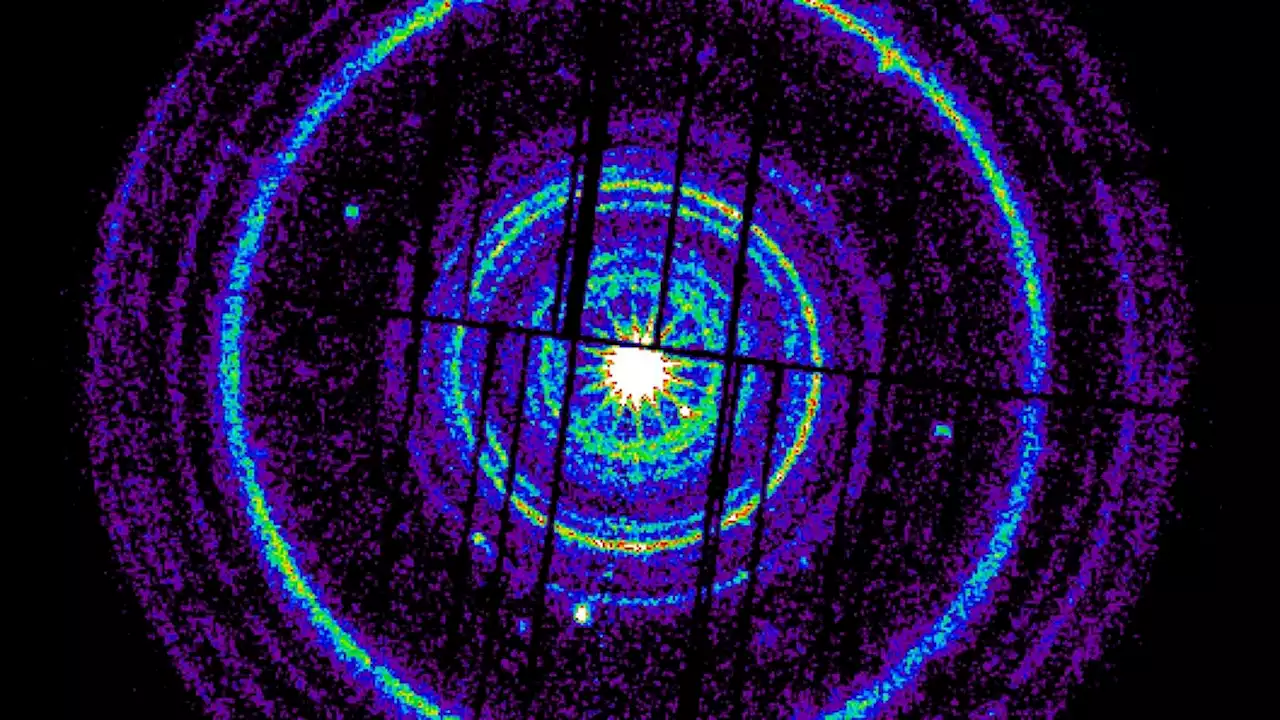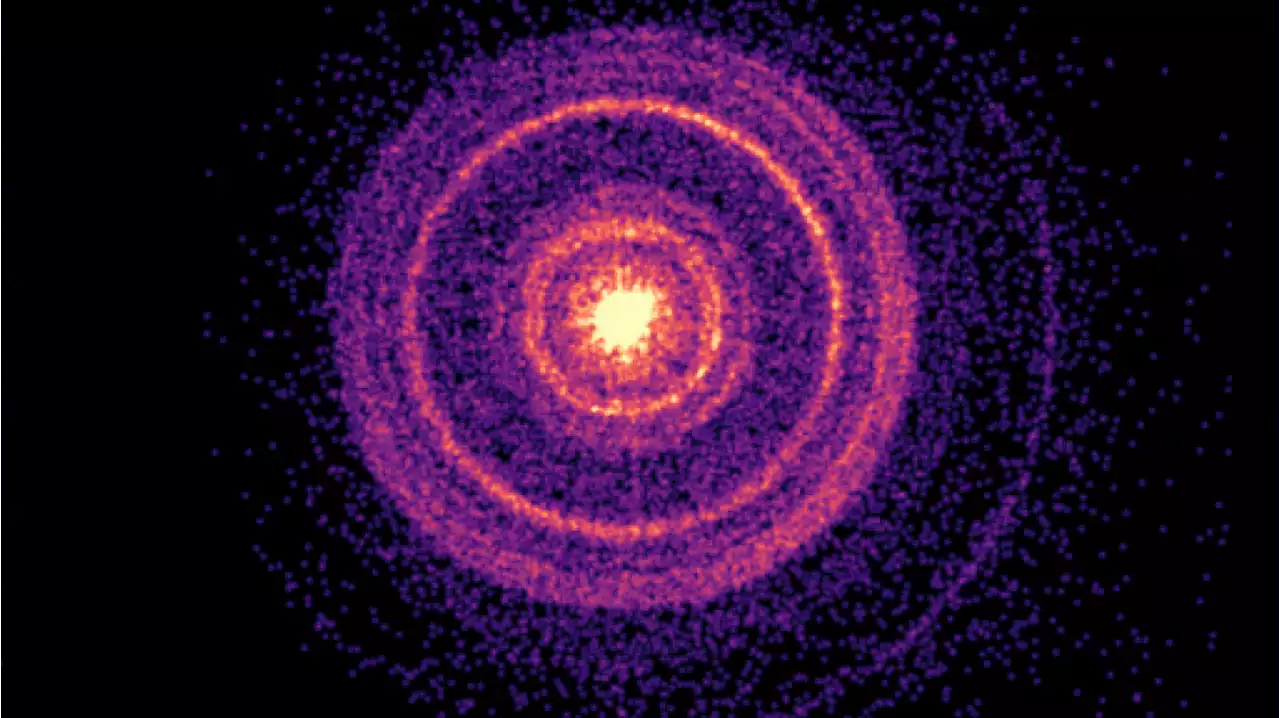The source was a 1-In-10,000-year gamma-ray burst, the most powerful class of explosions in the universe, which has been dubbed the 'Brightest of All Time' (BOAT).
“If it’s there, it’s very faint. We plan to keep looking,” said Andrew Levan, a professor of astrophysics at Radboud University in Nijmegen, Netherlands. The search is underway with both the James Webb Space Telescope and the Hubble Space Telescope for the supernova, but there is another possible explanation.
“It’s possible the entire star collapsed straight into the black hole instead of exploding,” said Levan. It’s thought that gamma-ray bursts are jets of particles accelerated into space at near-light speed that rip through the remains of a collapsed massive star—and signal the birth of a back hole.gamma-ray bursts. The BOAT was so bright it effectively blinded most gamma-ray instruments in space, but U.S. scientists were able to reconstruct its true brightness from Fermi data.
The jets of intense radiation sensed by spacecraft in October traveled for around 1.9 billion years, but it was the angle at which it arrived that may explain its brightness, suggest the researchers. The jets were very narrow and one was pointed directly at Earth. That may explain its incredible brightness.
The research team included astronomers from the UK, USA, Australia, the Netherlands, Italy, and South Africa using data from radio telescopes across the world and the solar system.
México Últimas Noticias, México Titulares
Similar News:También puedes leer noticias similares a ésta que hemos recopilado de otras fuentes de noticias.
 Brightest gamma-ray burst observed is once-in-10,000-year cosmic eventA powerful pulse of gamma-ray radiation swept across the Earth and numerous space-based detectors on October 9, 2022.
Brightest gamma-ray burst observed is once-in-10,000-year cosmic eventA powerful pulse of gamma-ray radiation swept across the Earth and numerous space-based detectors on October 9, 2022.
Leer más »
 Astronomers Stunned by Brightest Gamma Ray Burst Ever RecordedThe astounding outburst came from a galaxy 2 billion light-years away. It's the 'BOAT'—the brightest of all time.
Astronomers Stunned by Brightest Gamma Ray Burst Ever RecordedThe astounding outburst came from a galaxy 2 billion light-years away. It's the 'BOAT'—the brightest of all time.
Leer más »
 Brightest gamma-ray burst ever detected defies explanationScientists are taking a closer look at the afterglow left by the brightest gamma-ray burst ever recorded, and what they see doesn't fit with any theoretical models.
Brightest gamma-ray burst ever detected defies explanationScientists are taking a closer look at the afterglow left by the brightest gamma-ray burst ever recorded, and what they see doesn't fit with any theoretical models.
Leer más »
 Brightest gamma-ray burst ever observed reveals new mysteries of cosmic explosionsOn October 9, 2022, an intense pulse of gamma-ray radiation swept through our solar system, overwhelming gamma-ray detectors on numerous orbiting satellites, and sending astronomers on a chase to study the event using the most powerful telescopes in the world.
Brightest gamma-ray burst ever observed reveals new mysteries of cosmic explosionsOn October 9, 2022, an intense pulse of gamma-ray radiation swept through our solar system, overwhelming gamma-ray detectors on numerous orbiting satellites, and sending astronomers on a chase to study the event using the most powerful telescopes in the world.
Leer más »
 Insight-HXMT and GECAM-C observations of the brightest-of-all-time GRB 221009AGRB 221009A is the brightest gamma-ray burst ever detected since the discovery of this kind of energetic explosions. However, an accurate measurement of the prompt emission properties of this burst is very challenging due to its exceptional brightness. With joint observations of \textit{Insight}-HXMT and GECAM-C, we made an unprecedentedly accurate measurement of the emission during the first $\sim$1800 s of GRB 221009A, including its precursor, main emission (ME, which dominates the burst in flux), flaring emission and early afterglow, in the hard X-ray to soft gamma-ray band from $\sim$ 10 keV to $\sim$ 6 MeV. Based on the GECAM-C unsaturated data of the ME, we measure a record-breaking isotropic equivalent energy ($E_{\rm iso}$) of $\bf \sim 1.5 \times 10^{55}$ erg, which is about eight times the total rest-mass energy of the Sun. The early afterglow data require a significant jet break between 650 s and 1100 s, most likely at $\sim950$ s from the afterglow starting time $T_{AG}$, which corresponds to a jet opening angle of $\sim {0.7^\circ} \ (η_γn)^{1/8}$, where $n$ is the ambient medium density in units of $\rm cm^{-3}$ and $η_γ$ is the ratio between $γ$-ray energy and afterglow kinetic energy. The beaming-corrected total $γ$-ray energy $E_γ$ is $\sim 1.15 \times10^{51} \ (η_γ n)^{1/4}$ erg, which is typical for long GRBs. These results suggest that this GRB may have a special central engine, which could launch and collimate a very narrowly beamed jet with an ordinary energy budget, leading to exceptionally luminous gamma-ray radiation per unit solid angle. Alternatively, more GRBs might have such a narrow and bright beam, which are missed by an unfavorable viewing angle or have been detected without distance measurement.
Insight-HXMT and GECAM-C observations of the brightest-of-all-time GRB 221009AGRB 221009A is the brightest gamma-ray burst ever detected since the discovery of this kind of energetic explosions. However, an accurate measurement of the prompt emission properties of this burst is very challenging due to its exceptional brightness. With joint observations of \textit{Insight}-HXMT and GECAM-C, we made an unprecedentedly accurate measurement of the emission during the first $\sim$1800 s of GRB 221009A, including its precursor, main emission (ME, which dominates the burst in flux), flaring emission and early afterglow, in the hard X-ray to soft gamma-ray band from $\sim$ 10 keV to $\sim$ 6 MeV. Based on the GECAM-C unsaturated data of the ME, we measure a record-breaking isotropic equivalent energy ($E_{\rm iso}$) of $\bf \sim 1.5 \times 10^{55}$ erg, which is about eight times the total rest-mass energy of the Sun. The early afterglow data require a significant jet break between 650 s and 1100 s, most likely at $\sim950$ s from the afterglow starting time $T_{AG}$, which corresponds to a jet opening angle of $\sim {0.7^\circ} \ (η_γn)^{1/8}$, where $n$ is the ambient medium density in units of $\rm cm^{-3}$ and $η_γ$ is the ratio between $γ$-ray energy and afterglow kinetic energy. The beaming-corrected total $γ$-ray energy $E_γ$ is $\sim 1.15 \times10^{51} \ (η_γ n)^{1/4}$ erg, which is typical for long GRBs. These results suggest that this GRB may have a special central engine, which could launch and collimate a very narrowly beamed jet with an ordinary energy budget, leading to exceptionally luminous gamma-ray radiation per unit solid angle. Alternatively, more GRBs might have such a narrow and bright beam, which are missed by an unfavorable viewing angle or have been detected without distance measurement.
Leer más »
 Recent cosmic explosion likely the 'brightest of all time,' NASA saysNASA astronomers recently spotted a burst of radiation that was quickly crowned the 'BOAT': the brightest of all time.
Recent cosmic explosion likely the 'brightest of all time,' NASA saysNASA astronomers recently spotted a burst of radiation that was quickly crowned the 'BOAT': the brightest of all time.
Leer más »
